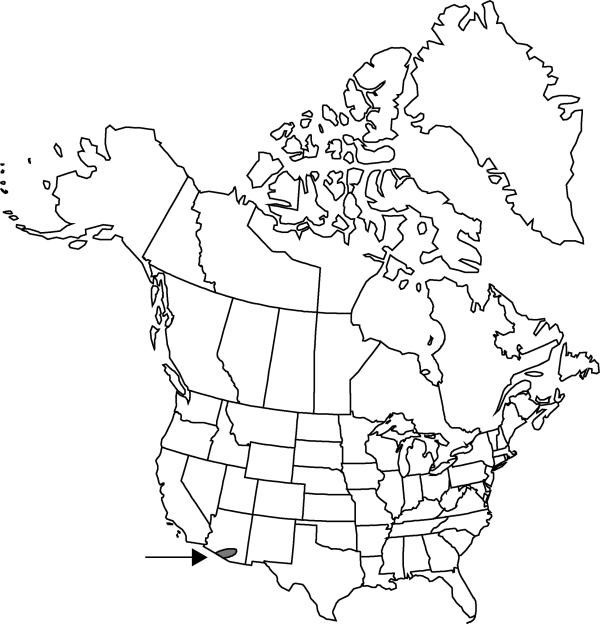Boerhavia megaptera
Contr. U.S. Natl. Herb. 12: 379. 1909.
Herbs, annual; taproot tapered, soft or ± woody. Stems usually erect or ascending, occasionally decumbent, branched several times, primarily distally, 3–6 dm, minutely puberulent with bent hairs and sometimes also glandular hairs in basal portions; sparsely to moderately puberulent distally. Leaves mostly in basal 1/2 of plant; larger leaves with petiole 12–17 mm, blade oblong-lanceolate, 25–50 × 10–17 mm (distal leaves smaller, sometimes longer, proportionately narrower), adaxial surface glabrous or very sparsely puberulent, often punctate, abaxial surface paler than adaxial, glabrous or very sparsely puberulent, usually punctate with small dark brown cells, base round, obtuse, or truncate, margins entire or slightly and irregularly crenulate, apex broadly to narrowly acute. Inflorescences terminal, forked ± unevenly ca. 3–4 times, with sticky internodal bands; branches strongly ascending, terminating in umbels (rarely flowers borne singly). Flowers: pedicel 1–2 mm; bracts at base of perianth quickly deciduous, 2, lanceolate, 0.6–1.5 mm; perianth whitish to pale pink, campanulate distal to constriction, 1–1.5 mm; stamens 3–4, barely exserted. Fruits (1–)3–14 per umbel, straw colored at maturity, broadly obconic, emarginate in profile (wings extended beyond apex of body), 3.2–3.8 × 2.2–2.6 mm (l/w: 1.3–1.5), glabrous; ribs 5, winglike, smooth; sulci 1–2 times as wide as base of ribs, smooth or very slightly rugose, not papillate.
Phenology: Flowering summer–fall.
Habitat: Rocky ground, among desert shrubs or trees
Elevation: 700-1300 m
Distribution

Ariz.
Discussion
Boerhavia megaptera is often sympatric with B. intermedia.
Selected References
None.